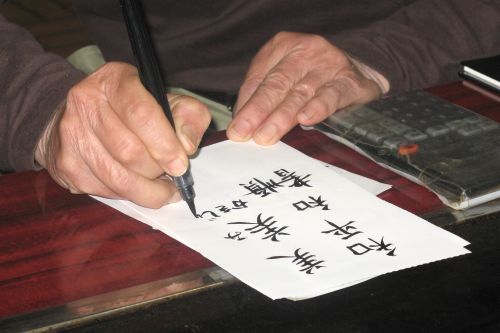
When we prepare to travel abroad, we often search for the most useful phrases in a given language so that during our trip we can ask someone for help or ask about something if necessary. These include, among others, words and phrases that help us be polite during conversations.
Etiquette during a conversation is very important, and phrases that can be used for it will undoubtedly come in handy during a trip. In some countries, this courtesy is much more important in everyday life than in others, and one such country is Japan, which is reflected in the language as a wide variety of Japanese words and phrases used to express appreciation and gratitude. In this article, we take a look at how the Japanese express gratitude – which is much more complicated than it sounds.
Spis treści:
Politeness in the Japanese language
The Japanese are known to adhere strictly to many social rules and to be extremely polite. This politeness results from a different worldview than in Western countries, according to which the good of the community is more important than the individual, and everyone should put other people’s needs ahead of their own. These views are reflected not only in the way the Japanese behave, but even in the language they use.
This is most evident in the Japanese honorific speech, which is a real challenge for any foreigner learning the language. The Japanese have always valued the social hierarchy very highly, and until the Meiji restoration in Japan, there was a caste system. People belonging to different castes used a different language out of respect for people with a higher position in society. Although castes no longer exist, honorific speech is still used to emphasize what kind of relationship connects interlocutors, their age difference, or difference in social standing.
Keigo (敬語) – Honorific Speech in Japanese
The Japanese honorific speech is called keigo. This word is written with two kanji characters – the kanji 敬 which means “to respect” or “to admire”, and the kanji 語 which means “language”. This system is very extensive, with specific vocabulary and grammatical forms. There are also four basic keigo levels, the rules of which are briefly discussed below.
The Concepts of Uchi and Soto
To learn in what situations the terms of a given level of keigo are used, one must first understand the concepts of social circles and the uchi–soto (内-外), which means “in-out”. Our uchi circle is the group we belong to, while the soto means the group we are not a member of. Many groups can be described in this way – from the family to the company we are employees of. Belonging to social groups is extremely important in the everyday life of Japanese people, which is reflected in the language used by members of particular groups and the language used by members of different groups to address each other.
Kudaketa nihongo (くだけた にほんご) – Casual Japanese
It might seem that studying the language should start with relaxed, everyday expressions, however, politeness in Japanese culture is so important that many teachers decide to introduce their students to more formal phrases first. Casual Japanese is usually used when talking to a person of similar age or someone younger, and only with people who are uchi – members of our social circle. It involves using slang words and basic forms of verbs and nouns.
Teineigo 丁寧語 – Polite Language
Teineigo is the basic polite form that students will find in their first textbooks. Teineigo involves using desu (です) at the end of sentences and ending verbs with the suffix –masu (ます), referring to yourself as watashi (わたし,) and using prefixes o- and go- towards neutral objects. Some words can be substituted with their more polite counterparts. Teineigo is also the most universal when speaking to people of various ages and social statuses. Keep in mind that sometimes using it in relaxed conversations with friends can make you sound too stiff.
Sonkeigo 尊敬語 – Respectful Language
Sonkeigo is primarily used when addressing someone in a higher position to suggest that we are acting in a professional capacity. Respectful language is therefore particularly common in workplaces when addressing clients and superiors. It is characterized by replacing many common words with their respectful equivalents and by forming lengthy, polite sentences. It is worth mentioning that sonkeigo should never be used to refer to yourself.
Kenjougo 謙譲語 – Humble Language
We use kenjougo to mark our lower position in a conversation with someone with a higher social status. We can also use it when we are talking to someone outside our circle (and therefore soto people) and want to mention another person from our circle, even if theoretically they are above us in the hierarchy (our supervisor, for example). In this way, we show humility, which is very important in a professional environment in Japan.
The rules of kenjougo are similar to sonkeigo – many nouns and verbs are replaced with their humble counterparts.
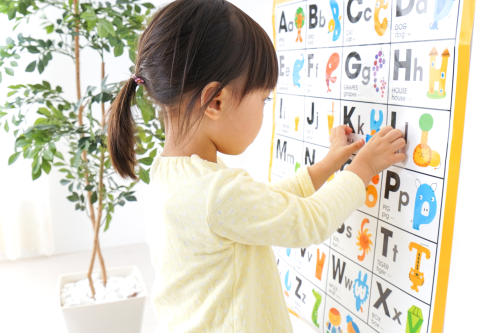
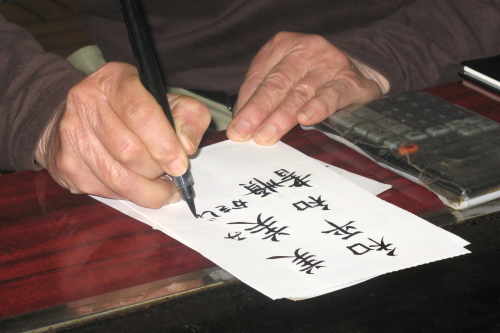
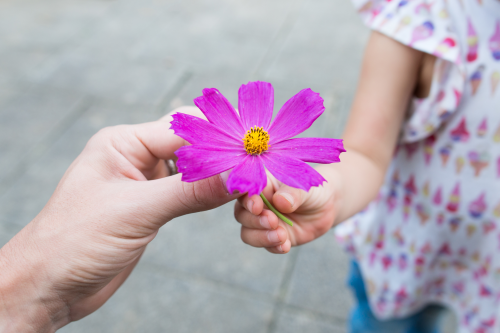
Different Ways to Say “Thank You” in Japanese
We have collected different expressions that can be used to express gratitude in Japanese. They vary in the degree of formality, and some of them should only be used in certain situations or conversations with a specific group of people.
Arigatou (ありがとう)
A basic word for expressing gratitude that even people who have never learned Japanese will recognize is arigatou (ありがとう). It is the most straightforward and universal form appropriate for various situations. Depending on who you are referring to, you can also modify this phrase to switch it from casual to more formal.
Simple arigatou is a common and quite casual way to say “thank you” to friends, relatives, and other people your age or younger. You can make this phrase more emotional by adding honto ni (本 当 に) or makoto ni (誠 に) before the word arigatou, which together roughly translates to “sincere thanks”. Extensive version of arigatou is kurete arigatou (くれてありがとう). It expresses deeper gratitude.
If you would like to use the phrase in a more formal situation, it is enough to say arigatou gozaimasu (ありがとうございます) or kurete arigatou gozaimasu (くれてありがとうございます). You can also create an even longer phrase doumo arigatou gozaimasu (どうもありがとうございます) that emphasises your gratitude even further and works well in a business context.
Last but not least, it is worth remembering the phrases arigatou gozaimashita (ありがとうございました) and doumo arigatou gozaimashita (どうもありがとうございました). These are the expressions discussed in the previous paragraph in the past tense, and we use them to thank somebody for something that has already happened.
Doumo (どうも)
In everyday life, among close friends, arigatou may still be too much. That is when a short and simple doumo comes in handy. It is just the phrase doumo arigatou cut short and it simply means “thanks”. Doumo is extremely casual, so use it only with people you are very close with.
Sankyū (サンキュ)
This Japanese word surely sounds familiar to all English speakers. If you have ever studied Japanese writing systems, you will also recognize the katakana characters, which are used to write foreign words.
Sankyū is a very casual phrase with a friendly, sometimes even slightly flirty, undertone. Like most slang words, you can use it only with friends and other people of your age whom you know well. Under no circumstances should you thank strangers, elderly people, or people of different social statuses in this way.
Azasu (あざす)
Very informal and used mostly among a younger crowd, azasu is actually a slang version of arigatou gozaimasu – when you say this phrase fast, it will sound exactly like that. Sometimes you can also hear it being used as a greeting (like English “Whassup!”) or as a relaxed way of apologizing (like “My bad” in English). Sometimes it appears in text messages in shortened form “AZS”. Many people in Japan avoid using it as it could be considered rude, although it is safe in casual conversations with friends or younger siblings.
Sumimasen (すみません)
This is another word that many of us have already heard if we are interested in Japanese culture. It is used quite often, but we probably associate it more with apologies than with expressing thanks, as it is usually translated as “excuse me”. In reality, it carries both of these meanings.
The use of sumimasen in the context of showing appreciation has to do with the politeness of the Japanese people, which is deeply ingrained in their language. With the word sumimasen we thank someone while apologizing to him for having to go through any trouble to do us a favour.
This Japanese phrase is semiformal and comes in handy in everyday situations. There is also another version of it – sumanai (すまない) – which is very casual and used mostly by men.
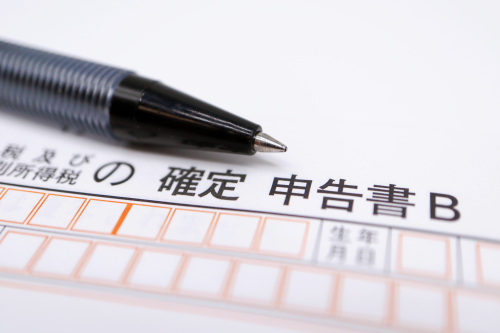


Osoreirimasu (恐れ入ります)
The meaning of osoreirimasu is similar to sumimansen. It also allows to express apology and appreciation at the same time, however, the literal meaning of it is pretty surprising – it translates to “excuse me”, “I can’t stand against you”, “I’m awed by you” and even “I’m scared of you”. Osoreirimasu is very formal and is rarely used, usually reserved for formal situations when thanking someone with a higher rank, and for the customer service industry, where it is used by salespeople thanking customers.
Kansha suru (感謝する)/kansha shimasu (感謝します)
The word kansha (感謝) means gratitude, thanksgiving. Depending on the situation and the relationship between us and the person we are talking to, we can add suru (する) or shimasu (します) to form a phrase that literally translates as “I am grateful”. Both of these words mean “to be”, but kansha shimasu is a very polite form, while kansha suru is more casual. However, both are a bit too polite to be used in conversations, so you’ll most often see them in writing or in exceptional situations that require sublime language.
Otsukaresama (お疲れ様)
If translated literally, the word otsukaresama (お疲れ様) means “to be tired”. If we follow it with desu (present tense; お疲れ様です) or deshita (past tense; お疲れ様でした), we get the expression that means “you are tired”. Surprisingly, it can be used to greet someone or thank them.
Appreciating others is very important in Japanese culture. Therefore, by noticing someone’s fatigue, we simultaneously say we recognize that person’s hard work. Phrases otsukaresama desu and otsukaresama deshita are often used by colleagues in the workplace. Co-workers not only thank each other for the effort they put into for example teamwork but also use it to say hello and goodbye, especially if they notice someone who comes to work earlier than they have to and leaves late.
Kyoushuku desu (恐縮です)
This is another phrase that can be used both for apologizing for causing trouble while making a request and for expressing gratitude. Kyoushuku (恐縮) is a very formal and polite word that can be roughly translated to English as “sorry to bother you”. In the context of thanking someone, it should be followed by the word desu (です). This phrase expresses very deep gratitude and honours the addressee. It might come in handy in formal circumstances, for example when thanking a superior.
Itadakimasu (いただきます) and Gochisousama deshita (ごちそうさまでした)
The last two phrases on our list are essential if we are having a meal in Japan. The first one, itadakimasu (いただきます), is said before eating and drinking and has a similar function to saying grace before a meal, though it is only a social tradition. It is both a signal to others that it is time to start eating and way of expressing gratitude for the meal.
Gochisousama deshita (ごちそうさまでした) has the same function and meaning, but it should be said after a finished meal.
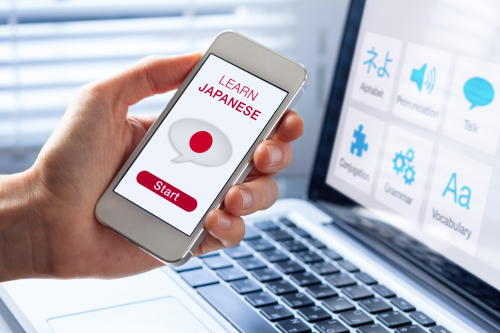

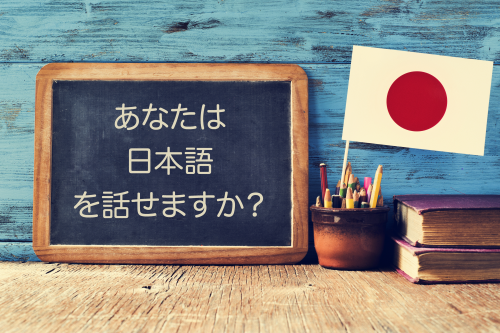
How to Respond to “Thank You” in Japanese?
We have covered many words and expressions with which we can show appreciation and gratitude. But it is just as important to be able to respond when someone is thanking us. So how do you say “you’re welcome” in Japanese? Just like “thank you”, it can be expressed in many different ways.
Ieie (いえいえ)
The first on the list is a pretty simple way to respond to a “thank you”. Ieie simply means “no, no” in English and when someone says it after we have thanked them for something, we can understand it as “don’t mention it”.
Tondemonai (とんでもない)
This phrase has a similar meaning to ieie, and we can translate it as “don’t mention it” or “it’s nothing”. You can hear it quite often in casual, everyday conversations.
Yokatta (よかった)
Next on the list is yokatta, which can be used as an informal way of saying “you’re welcome”. It is usually translated to “I’m glad”, so in the context of responding to a thank you, we can understand it as “I’m glad I could help you”.
Kinishinaide (気にしないで)
The next phrase, kinishinaide, can also be used as “you’re welcome” in an unofficial conversation. We can translate it as no worries, so it is a good way to reassure someone that doing them a favour was not a problem for us.
Itsudemo koe kakete (いつでも声かけて)
The last of the casual phrases on our list, itsudemo koe kakete, we can translate as “always here to help” or “let me know if you ever need help”, which is often added after other phrases for “you’re welcome” and a nice way of reassuring someone that we will always support them.
Dou itashimashite (どういたしまして)
Among the more polite phrases for saying “you’re welcome”, dou itashimashite is a popular expression you’ll probably find first when you look at the dictionary. This is a humble and polite way of responding when someone thanks you, but can be used in less formal situations as well.
Kyoushuku de gozaimasu
This is a useful business expression that works great with clients or supervisors, and most often appears in writing. Kyoushuku de gozaimasu translates to “I’m obliged”. You can also come across its other variations, such as kyoushuku desu (恐縮です) or kyoushuku itashimasu (恐縮いたします).
Oyakunitatte yokatta (お役に立ってよかった)
We can translate oyakunitatte yokatta to English as “I am glad that I was of use to you”. Because of using the -o prefix at the beginning, this expression is polite and formal, which makes it suitable for many situations.
Kochirakoso (こちらこそ)
This is a polite phrase, especially when speaking to people we work with. It stands for “likewise” or “I should thank you as well” and emphasizes that what we are receiving a “thank you” for is the result of a collaborative effort.
Learn Japanese with Us!
We hope you find this article helpful and saying thank you during a Japanese conversation will from now be a lot easier. We also encourage you to read the other articles that we publish on our blog.
Learning fixed expressions is a great way to start learning a language. However, if you would like to master Japanese – learn grammar, discover new vocabulary, and study the writing systems – consider signing up for a language course organized by our school. We offer online lessons with both a qualified Polish teacher and a native speaker who, after acknowledging your goals, will adjust the course material to your needs. You can choose how many lessons you need and their dates, so you don’t have to worry that it will be difficult for you to find time to study in a busy schedule. Sign up today!

